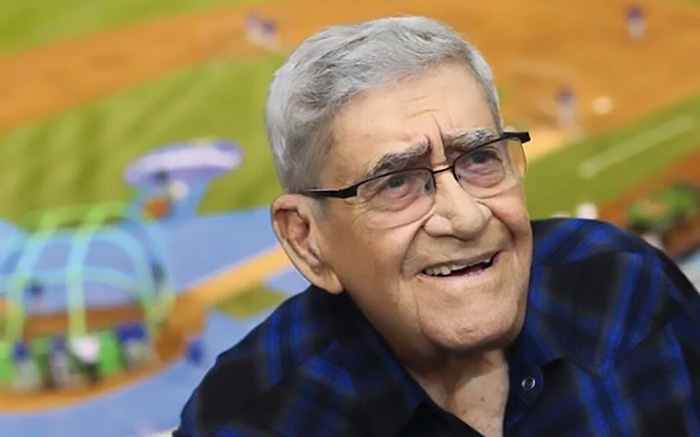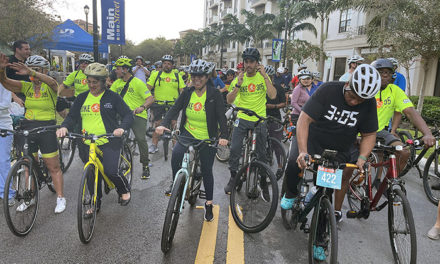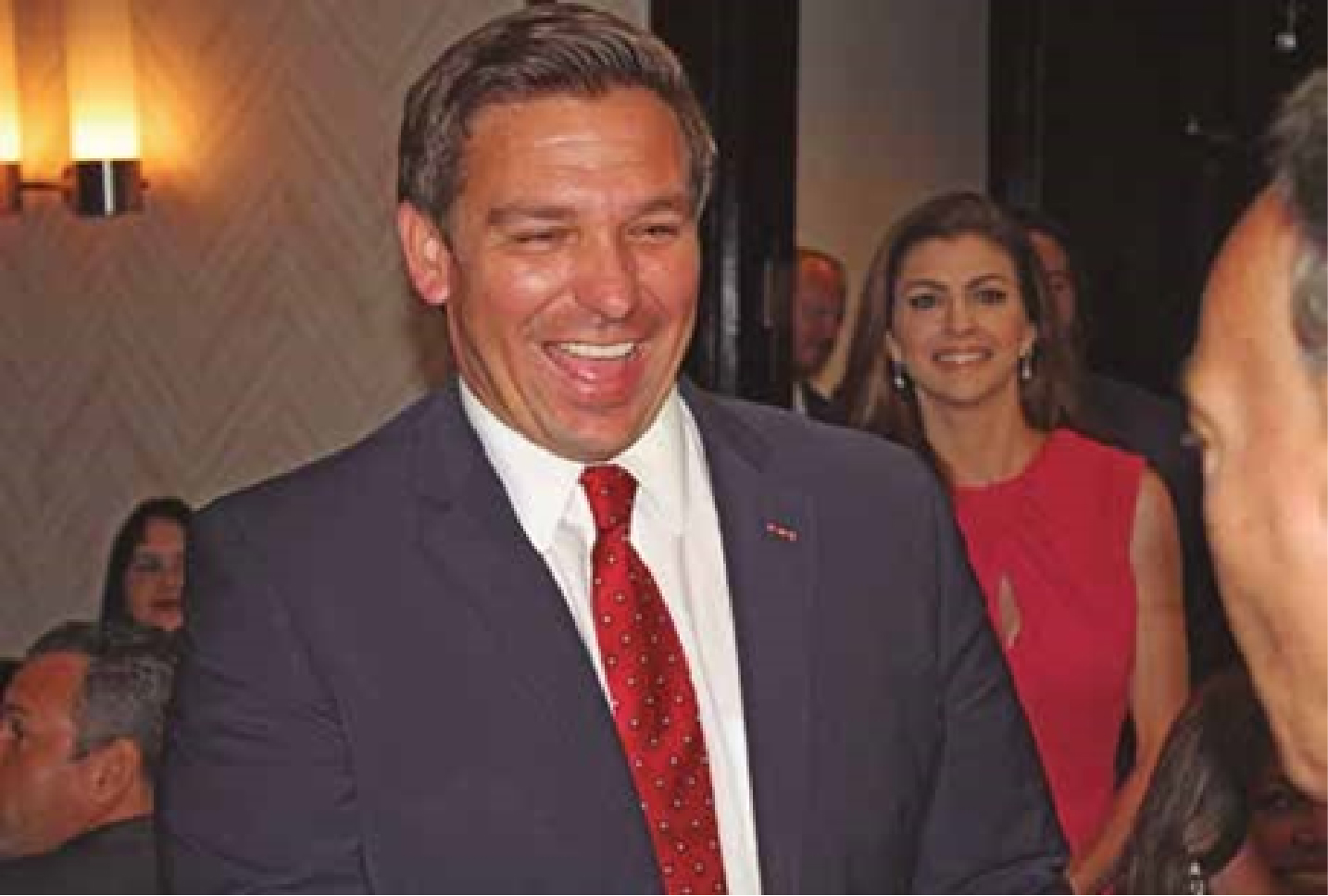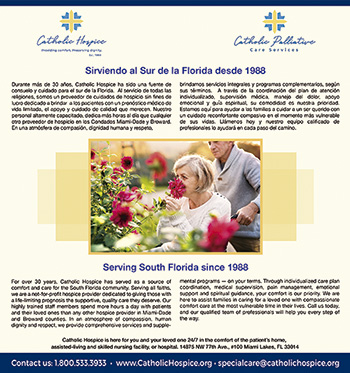Rafael “Felo” Ramírez passed away August 21, 2017. El Vocero News is honoring his memory with a five-part biographical account of his life, culminating with our August edition and the fifth-year anniversary of his death.
(Part Three of Five)
By Lou Hernández
Felo’s growing profile in Cuba did not escape sports biggest broadcast conglomerate. The Gillette Cavalcade of Sports was heard, during its heyday, throughout 200 radio stations in the United States, and branched out into the Spanish-speaking countries of the Caribbean and South America. Its primary sports headline attractions were baseball (All-Star Game, World Series and then Game of the Week) and boxing, gaining a reputation for exceptional Friday night fights on television.
The Gillette Cavalcade of Sports approached Felo in 1951 to join their Spanish broadcast team. He jumped at the opportunity. The Cuban native’s first broadcast was live from Madison Square Garden in New York, Friday, May 25. The main card featured lightweight champion Ike Williams and challenger Jimmy Carter. If that was not a starry occasion in and of itself, Ramírez was partnered with his idol, Buck Canel. The same idol a young Felo would never grow tired of listening to on the radio in Cuba.
In the fall, thanks to his new employer, the “Pride of Bayamo,” as he was nicknamed in Cuba, nestled behind the microphone for his first World Series extravaganza. Starting in 1951, Ramírez went on to call 31 of the next 32 World Series. During one of his initial Fall Classic games at Yankee Stadium, Felo liked to recall an incident that occurred with a foul ball skipping all the way back on the screen to the lip of the press box. He reached over for the ball and found himself in a tussle for it with an outstretched arm from the adjoining box. “I’m fighting, and finally I grab the ball and see that it’s Humphrey Bogart,” said Ramírez. “I was just a rookie. I put the ball in my pocket. I didn’t realize until later that I should have given him the ball—or at least have gotten his autograph.”
The Canel-Ramírez GCS-teaming was the beginning of a beautiful broadcast friendship. During the 1950s, the pair would go on to “paint the pictures” for their Hispanic audiences to boxing and baseball’s biggest showcases. In particular baseball, for which Cavalcade had purchased the World Series rights in 1939. “He had a great voice and great personality,” Ramírez said of Canel. “He developed a great appreciation for me. Canel would say I was the only one who did not try to imitate him.” One of the duo’s most memorable World Series was in 1955, the storied Brooklyn Dodgers only world championship, and the 1956 Classic, which included Don Larsen’s perfect game.
Felo’s streak of Fall Classics was interrupted in 1961, when he was not permitted to leave Cuba, two years after the Cuban Revolution. Its guerrilla leader, Fidel Castro, and his Marxist sociopolitical turn had convulsed the island and altered baseball in the Caribbean for the remainder of the century.
“[That was] the year of the great home run race between Mickey Mantle and Roger Maris,” Ramírez recollected. “They [the government] told me I couldn’t talk about it [on the radio]. I talked about it every day. I wanted them to fire me.”
Felo’s career might have stagnated for who knows how long, if not for a life-affecting whim carried out by one of the new usurpers of power in the country. “I was able to leave [Cuba] because of my house,” Ramírez said. “A captain in the army lived in my neighborhood, and his wife wanted my house. She told her husband to get my house for her. One day, a lieutenant from the army approached me and asked me if I was doing the winter-league games in Venezuela. I told him I had a contract, but I couldn’t leave. He gave me a note and told me to go to an office. I went the next day, and everything was arranged for me to leave . . . It was like a miracle for me. I was dying to leave Cuba.” 17 The literally liberating experience was not without personal cost and sacrifice, however. Ramírez left Cuba on November 6, 1961. “It was difficult leaving my parents and sisters,” Ramírez reminisced decades later. “I never saw my mother again. My father I did see once more but he was 92.”
Next: Broadcasting throughout the Americas and a world championship in Miami.
Felo Ramírez
Rafael “Felo” Ramírez falleció el 21 de agosto de 2017. El Vocero News honra su memoria con un relato biográfico de cinco partes de su vida, que culmina con nuestra edición de agosto y el quinto aniversario de su muerte.
(Parte Tres de Cinco)
El creciente perfil de Felo en Cuba no escapó al mayor conglomerado de transmisiones deportivas. La Cabalgata de los Deportes de Gillette se escuchó, durante su apogeo, en 200 estaciones de radio en los Estados Unidos y se extendió a los países de habla hispana del Caribe y América del Sur. Sus principales atracciones deportivas principales fueron el béisbol (Juego de Estrellas, Serie Mundial y luego el Juego de la Semana) y el boxeo, ganando reputación por sus excepcionales peleas de los viernes por la noche en la televisión.
La Cabalgata Deportiva Gillette se acercó a Felo en 1951 para unirse a su equipo de transmisión en español. Aprovechó la oportunidad. La primera transmisión del nativo cubano fue en vivo desde el Madison Square Garden en Nueva York, el viernes 25 de mayo. La cartelera principal contó con el campeón de peso ligero Ike Williams y el retador Jimmy Carter. Si esa no fue una ocasión estrella en sí misma, Ramírez fue pareja de su ídolo, Buck Canel. El mismo ídolo que un joven Felo nunca se cansaría de escuchar en la radio de Cuba.
En el otoño, gracias a su nuevo empleador, el “Orgullo de Bayamo”, como lo apodaron en Cuba, se acurrucó detrás del micrófono para su primer gran espectáculo de la Serie Mundial. A partir de 1951, Ramírez pasó a convocar 31 de las siguientes 32 Series Mundiales. Durante uno de sus juegos iniciales del Clásico de Otoño en el Yankee Stadium, a Felo le gustaba recordar un incidente que ocurrió cuando una bola foul saltó sobre la mella metálica hasta el borde del palco de prensa. Extendió la mano para agarrar la pelota y se encontró en una pelea por ella con un brazo extendido desde la caja contigua. “Estoy peleando, y finalmente agarro la pelota y veo que es Humphrey Bogart”, dijo Ramírez. “Solo era un novato. Puse la pelota en mi bolsillo. No me di cuenta hasta más tarde que debería haberle dado la pelota, o al menos haber obtenido su autógrafo”.
El equipo de Canel y Ramírez fue el inicio de una hermosa amistad televisiva. Durante la década de 1950, la pareja continuaría “pintando las imágenes” para sus audiencias hispanas en las exhibiciones más grandes del boxeo y el béisbol. En particular el béisbol, para el cual Cavalcade había comprado los derechos de la Serie Mundial en 1939. “Tenía una gran voz y una gran personalidad”, dijo Ramírez sobre Canel. “Desarrolló un gran aprecio por mí. Canel diría que yo fui el único que no trató de imitarlo”. Una de las Series Mundiales más memorables del dúo fue en 1955, el único campeonato mundial de los Dodgers de Brooklyn, y el Clásico de 1956, que incluyó el juego perfecto de Don Larsen.
La racha de Clásicos de Otoño de Felo se interrumpió en 1961, cuando no se le permitió salir de Cuba, dos años después de la Revolución Cubana. Su líder guerrillero, Fidel Castro, y su giro sociopolítico marxista había convulsionado a la isla y alterado el béisbol en el Caribe durante el resto del siglo.
“[Ese fue] el año de la gran carrera de jonrones entre Mickey Mantle y Roger Maris”, recordó Ramírez. “Ellos [el gobierno] me dijeron que no podía hablar de eso [en la radio]. Hablé de eso todos los días. Quería que me despidieran”.
La carrera de Felo podría haberse estancado por quién sabe cuánto tiempo, si no fuera por un capricho vital llevado a cabo por uno de los nuevos usurpadores del poder en el país. “Pude salir de Cuba por mi casa”, dijo Ramírez. “Un capitán del ejército vivía en mi barrio y su esposa quería mi casa. Le dijo a su marido que le consiguiera mi casa. Un día, un teniente del ejército se me acercó y me preguntó si estaba haciendo los juegos de la liga de invierno en Venezuela. Le dije que tenía un contrato, pero que no podía irme. Me dio una nota y me dijo que fuera a una oficina. Fui al día siguiente, y todo estaba arreglado para que me fuera. . . Fue como un milagro para mí. Me moría por irme de Cuba”. 17 Sin embargo, la experiencia literalmente liberadora no estuvo exenta de costos y sacrificios personales. Ramírez salió de Cuba el 6 de noviembre de 1961. “Fue difícil dejar a mis padres y hermanas”, recordó Ramírez décadas después. “Nunca volví a ver a mi madre. A mi padre lo vi una vez más, pero tenía 92 años”.
Próximo mes: Transmitiendo a todo el continente americano y un campeonato mundial en Miami.














